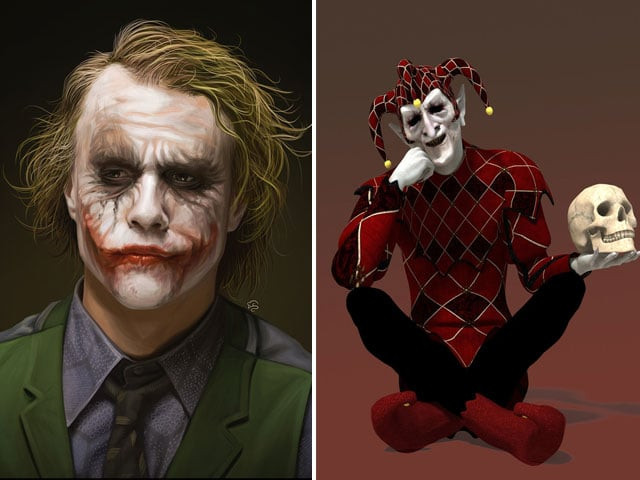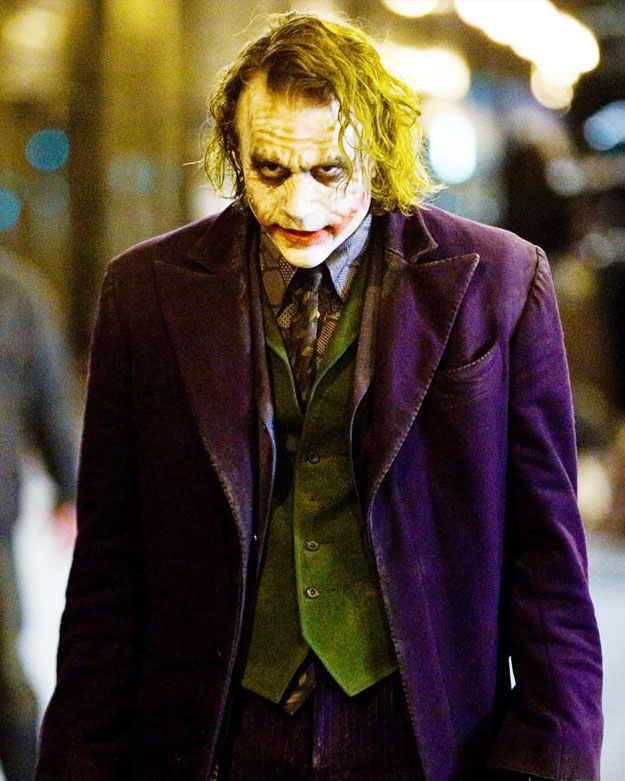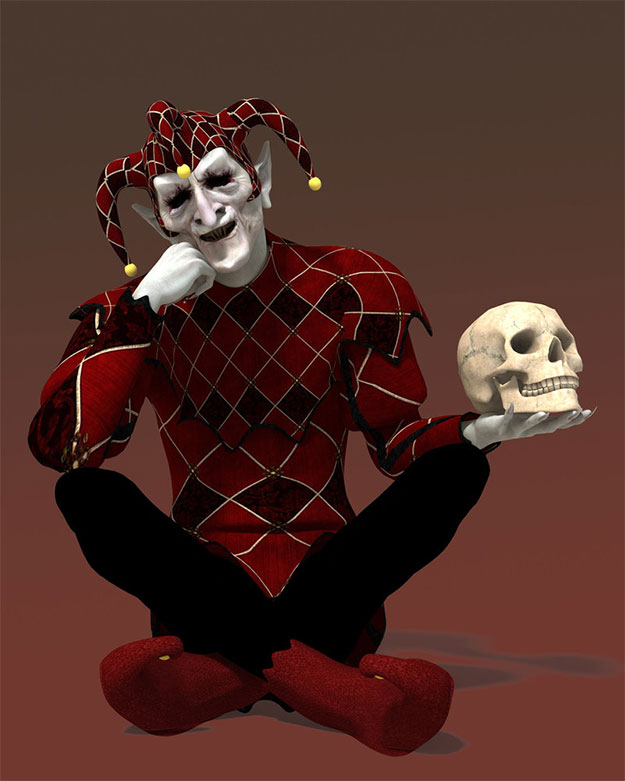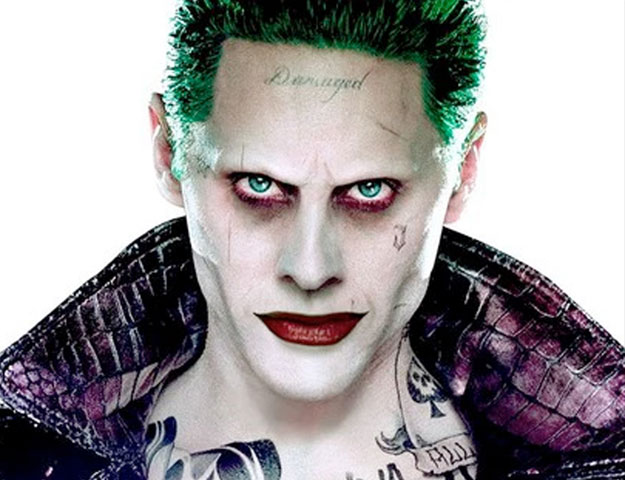Angels or Demons? How clown and joker emerge as a symbol of our times
Contradictory representations of the funny man in popular culture and their relationship

PHOTO: FILE
I feel like making a similar statement about 'the clown' and 'the jester', when I look at their conflicting and enigmatic representations in literature, art, films and various genres of popular culture.
'Harley Quinn vs The Joker' spin-off in the works
Let me explain this. But first, let’s take a look at the French artist Georges Rouault's ‘Ecce Homo’ painting about the Christian account of the Jesus Christ’s crucifixion.
 PHOTO: POPSUGAR
PHOTO: POPSUGARScourged, bound and crowned with thorns, the Christ is being presented before a hostile crowd by Pontius Pilate, the Roman governor, who, according to the Christian belief, ordered his execution.
Here Pilate feels pity for the Messiah; but at the same time, he also finds him ‘funny’ in his diadem of thorns – an irony that made Rouault paint Jesus in the image of a ‘clown’.
Rouault was a devout Christian and his painting intends to show how people, in their spiritual blindness, can reduce even a divine entity to an object of ridicule. However, the clown is not just a symbol of humiliation.
Police shoot couple having sex dressed as The Joker and Harley Quinn at party
So while the Lord is shown as being degraded as a clown in Rouault’s painting, the same clown is elevated to the stature of God in Raj Kapoor's critically acclaimed 1970 movie, Mera Naam Joker.
In one of its key scenes, fiancé of the protagonist’s school teacher tells the hero that all the people live for themselves but only a clown lives for others and that “God is the biggest clown because he also does everything for others and nothing for his own self.”
 PHOTO: HINDUSTAN TIMES
PHOTO: HINDUSTAN TIMESBut in the same movie, the clown also takes on proportions of a tragic character who has a pure, loving heart but whose smile hides a deep sense of personal sorrow – an aspect that makes him a progeny of the protagonists of Charlie Chaplin’s movies.
We also find this kind-hearted tragic clown in Lucky Ali’s 1998 music video Nahi Lagta Dil and Abbas Ali Khan’s 2006 song, Sun Re, apparently as an emblem of innocence and unrequited love.
The clown in Heinrich Böll’s eponymous 1963 novel is more resilient then his above counterparts. But despite that, his struggle against a callous, opportunist and hypocritical world is essentially tragic.
3 reasons why the Kapoor family is against a Raj Kapoor biopic
But apart from being a tragic character, the clown and his brother jester are also a symbol of common sense and of honesty.
For example, in King Lear the court jester takes advantage of his license to mock and dispenses frank observations to highlight folly of the king.
Image of the jester also evokes much darker meanings, as death was often presented in the garb of a jester in medieval theatre – a practice that literalised the old saying that death makes a mockery of life's fleeting joys.
 PHOTO: PUBLICITY
PHOTO: PUBLICITYBut in the twentieth century, image of the clown and jester have undergone another major transformation.
In his definitive work on clownophobia, American cultural critic Mark Dery has called the ‘evil clown’ a mascot of the modern time and this evil clown has been continually appearing in popular music, art, video games, novels and films to represent mischief and terror.
In DC Comics, the Joker has evolved over the years into a symbol of madness and chaos. But the clown has become a completely malevolent and evil force in Stephan King’s 1986 novel ‘It’ and its 1990 TV adaptation and 2017 movie.
Fox teases 'X-Men' spin-off - with no X-Men
In the last few decades, the clown has also put up an appearance in popular culture as an alien, a separate order of creation, a freak and something in between the living and the dead.
As I said at the outset, this tedious but in no way an exhaustive list of contradictions may lead us to conclude that the complex symbols of the clown and the jester have now ceased to mean anything.
But can there be a relationship among all these contradictory representations of the funny man, after all?
A deceptively simple answer to this question may be that many of these contradictory meanings of the clown and the joker spring from the simple fact that NO ONE TAKES THEM SERIOUSLY.
Apparently, this is a fact that enables a jester to poke fun at people with impunity – the fool’s license in medieval king’s courts.
But it also denies a clown or a jester the privilege of being regarded as a complete human being with desires and feelings and makes people regard even his sorrows as pranks.
 PHOTO: DC
PHOTO: DCThis situation is depicted in Mera Naam Joker’s most tragic scene in which the audience laughs when the clown actually bewails death of his mother, who was sitting among the audiences during his show and died after watching his son fall from a very high place.
The Joker in the Batman plays dark tricks on the world, as, according to some backstories, he - due to some devastating experiences - has started believing that the life is a joke. In one of Christopher Nolan's renderings of the saga, the Joker sums it up in a catchphrase: 'Why so serious?'
The evil clown archetype can also be interpreted as use by a malevolent force of the smiling persona – which no one takes seriously –as a decoy to attract the unsuspecting victims.
The Joker Movie: Leonardo DiCaprio might be the new joker
The prototype of the evil clown, John Wayne Gacy – who sodomised and killed some 33 children between 1972 and 1978 in Illinois – also suggested this in one of his interviews.
Gacy said he liked clowning because, “You can get away a lot of things when you are ….clown because people see you as a something funny. They don’t know what is beneath the greasepaint. A clown can get away with a murder.”
This cruel statement says a lot, but still, it falls short of unravelling mystery of the funny man, who, according to Carl Jung, is one of the many archetypical roles people have been unwittingly playing since time immemorial.
Have something to add to the story? Share it in the comments below.

1675249047-0/image-(18)1675249047-0-208x130.webp)

















COMMENTS
Comments are moderated and generally will be posted if they are on-topic and not abusive.
For more information, please see our Comments FAQ